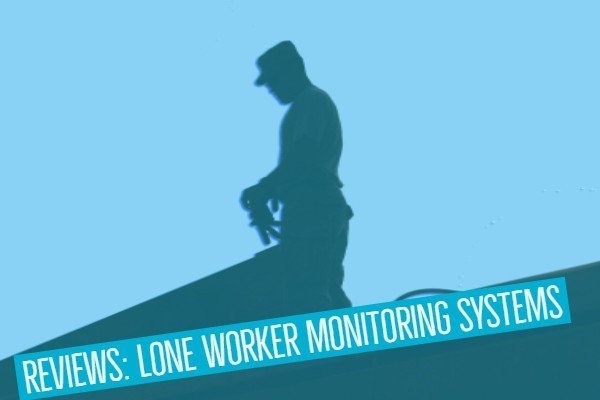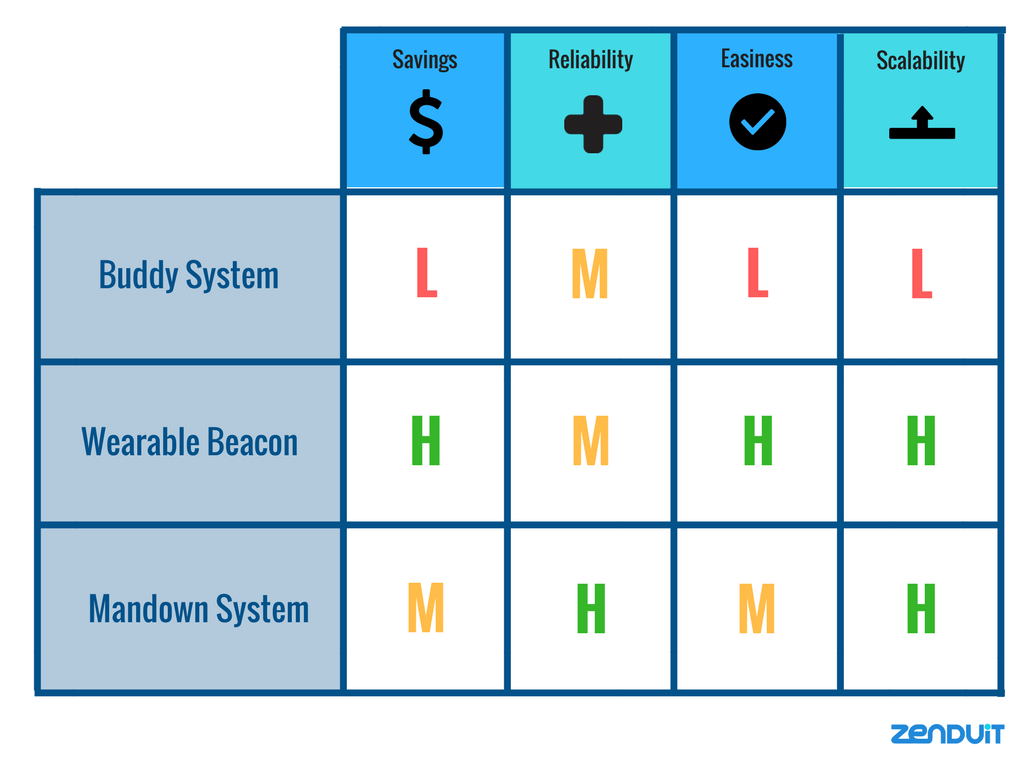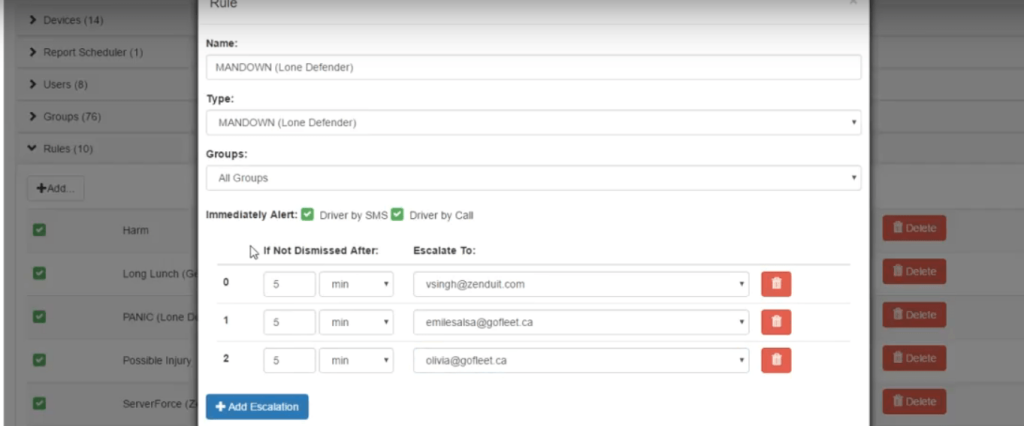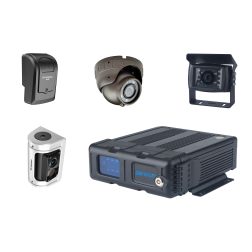
How do different lone worker monitoring systems compare with each other? Ever since lone workers existed, so have different lone worker monitoring systems. Some examples include:
- Buddy system. The good old buddy system is one of the first ways to manage lone workers. Each worker is assigned a buddy. The buddy is responsible for regularly checking up on their partner and ensuring their safety.
- Wearable beacons. Another way to manage lone workers is using wearable beacons. Wearable beacons are wearable items that track and serve lone workers. For example, survival TV star Bear Gryllis wears an emergency watch and pulls the watch’s cord if he needs help.
- Mandown devices. Mandown devices are dedicated lone worker monitoring systems. The device monitors worker location and alerts supervisors in emergencies.
How do each of the three systems compare with each other? We will use four categories to compare the lone worker monitoring systems:
- Savings
- Relability
- Easiness
- Scalability

Savings
Savings is how much time and money is saved with each program.
Buddy system – Low
The buddy system has the lowest startup cost because it doesn’t require a hardware purchase. However, think long term! The buddy system has the highest long term cost.
The buddy system is expensive because it requires having a supervisor. Here’s a quick math exercise. A single supervisor, based on a measly $10/hour pay and a 8-hour work shift costs $1600/month!
Wearable beacons – High
Wearable beacons are cheaper than the buddy system. Although there is an initial hardware cost, subsequent costs are lower. For instance, some devices have a low monthly tracking fee while other devices require replacement parts after each use.
Mandown system – Medium
Mandown systems typically cost a bit more than wearable beacons because they are industry grade products. However, similar to wearable beacons, having mandown systems are much cheaper than paying a supervisor.
Reliability
Reliability is the effectiveness of the lone worker system in promoting safety.
Buddy system – Medium
Buddy systems are somewhat reliable, depending on the supervisor. One of its pluses and minuses is having an actual supervisor. On the plus side, people can think critically while machines follow preset rules. And of course, on the minus side, people can also make mistakes and forget to check on lone workers.
Wearable beacons – Medium
Wearable beacons are highly reliable because they have built-in GPS monitoring. If an employee needs help, they can share their beacon location with emergency services. One of the drawbacks, however, is that employees have to press an emergency button to get help.
Mandown systems – High
Mandown systems are also highly reliable because of its built-in GPS. The biggest difference, however, is that mandown systems have active worker monitoring. In other words, the system automatically detect emergencies such as falls or motionless employees.

Easiness
Easiness is the simplicity of learning and using the lone worker system.
Buddy system – Low
The buddy system is more complicated than the other systems. New supervisors need to be aware of several things such as employee contact info, regular checks, and escalation policies.
Wearable beacons – High
Wearable beacons are probably the easiest lone worker tool of the three. There are no further steps after an employee wears the beacon – the device manages itself and calls emergency if needed!
Mandown systems – Medium
Mandown systems are still easy to use but require more training than wearable beacons. The biggest difference between wearable beacons and mandown systems is the software.
Mandown system software include things like setting up escalation rules, reviewing employee check-ins and arranging the call queue. It’s a powerful program, but just like any program, users need to learn how to fully use it.

Scalability
Scalability is if the solution can handle a high volume of employees.
Buddy systems – Low
Buddy systems can get overly complex when there are a lot of employees. As employee size grows, so must the number of supervisors. As a result, buddy systems become unsustainable when there are more than a handful of lone workers.
Wearable beacons and Man down systems – High
Both wearable beacons and mandown systems are scalable. As the number employees grow, businesses can keep up by adding new devices. Even as the business gets more devices, it’s still manageable because the devices are self-managed.










